Mandel “Mandy” Bruce Patinkin (born November 30, 1952) is an acclaimed American actor and singer celebrated for his contributions to musical theatre, television, and film1. His career spans various roles on stage and screen, earning him a Tony Award and a Primetime Emmy Award, alongside nominations for multiple other prestigious awards In March 2004, Patinkin was diagnosed with prostate cancer at the age of 51. He underwent a radical prostatectomy, and the surgery was successful. Patinkin has spoken about his concern regarding the side effects of the surgery, but ultimately prioritized eliminating the .
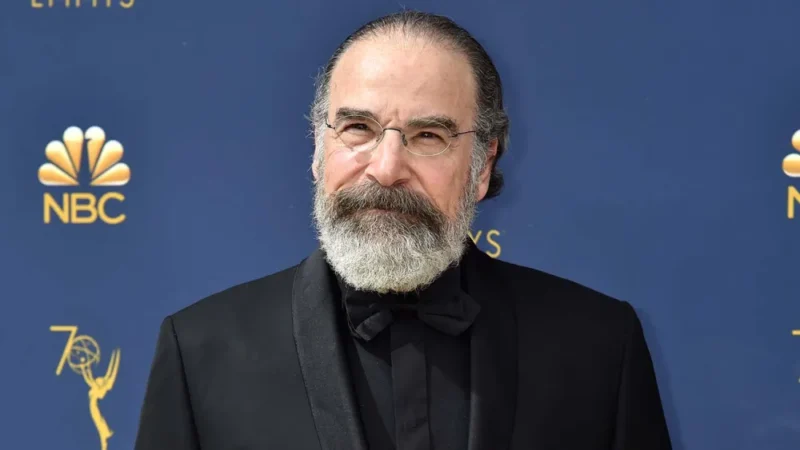
Jeff Kravitz/FilmMagic
How Did Mandy Patinkin Get Diagnosed with Prostate Cancer?
Mandy Patinkin’s prostate cancer journey began in March 2004 when he was diagnosed at the age of 51. This was approximately the same age his father was when he died of pancreatic cancer, which made the diagnosis particularly impactful for Patinkin.
Symptoms
Mandy Patinkin’s experience with prostate cancer underscores the often asymptomatic nature of the disease and highlights the critical importance of regular screenings for early detection.Prostate cancer frequently does not present noticeable symptoms in its early stages, which can lead to late diagnoses when treatment options become limited. Common early symptoms, when they do occur, may include difficulty passing urine, a slow or interrupted urine flow, frequent urination (especially at night), and incontinence. However, these symptoms can also be associated with benign conditions like benign prostatic hyperplasia (BPH).
What Was Mandy Patinkin’s Initial Reaction to His Diagnosis?
Upon receiving the news, Patinkin was overwhelmed with emotion, feeling lightheaded and weeping on the phone, as the diagnosis brought back memories of his father. This connection to his father’s death deeply amplified his distress. However, after undergoing a successful radical prostatectomy, Patinkin referred to his cancer experience as “the greatest gift I was ever given,” aside from his family. The experience led him to realize how he had previously taken life for granted, despite valuing his family, music, and career. It gave him a new awareness of the preciousness of each moment.
Reflecting on his father’s death, Patinkin recognized how his father had always postponed dreams, saying he’d do things “when you finish school” or “when we take this trip,” but never had the chance. This realization shifted Patinkin’s perspective, encouraging him to live more in the present, and his journey highlights how confronting a life-threatening illness can profoundly change one’s outlook on life, fostering a deeper appreciation for every day.
What Was the Prognosis?
While specific details about the exact stage of his prostate cancer were not disclosed, the fact that he underwent a radical prostatectomy suggests that his cancer was localized or locally advanced at the time of diagnosis. Prostate cancer typically progresses in stages, from localized (confined to the prostate) to advanced (spread to other parts of the body). Early-stage prostate cancer, which is confined to the prostate and has not spread, generally has a very high survival rate. Prostate cancer, like many other cancers, can be more successfully treated when detected early. According to the American Cancer Society, the survival rate for localized prostate cancer is nearly 100%, and for regional prostate cancer, it’s about 99%.
What Treatment Did Mandy Patinkin Undergo for Prostate Cancer?
Mandy Patinkin underwent a radical prostatectomy, a surgical procedure where the entire prostate and seminal vesicles are removed, usually when cancer is confined to the prostate. The surgery is effective for curative purposes and helps assess the aggressiveness of cancer, with the advantage of undetectable PSA levels post-surgery. There are different approaches, including open prostatectomy, laparoscopic prostatectomy, robotic-assisted prostatectomy, and perineal prostatectomy, each with varying incision sizes and techniques.
Robotic-assisted surgery can help preserve nerves, reducing the risk of erectile dysfunction. Radical prostatectomy offers an 85% chance of surviving 10 years after surgery for men with localized prostate cancer, and it is particularly effective in high-risk cases. Recovery typically takes 4 to 10 weeks, and there are potential risks, including incontinence, erectile dysfunction, and typical surgical complications.
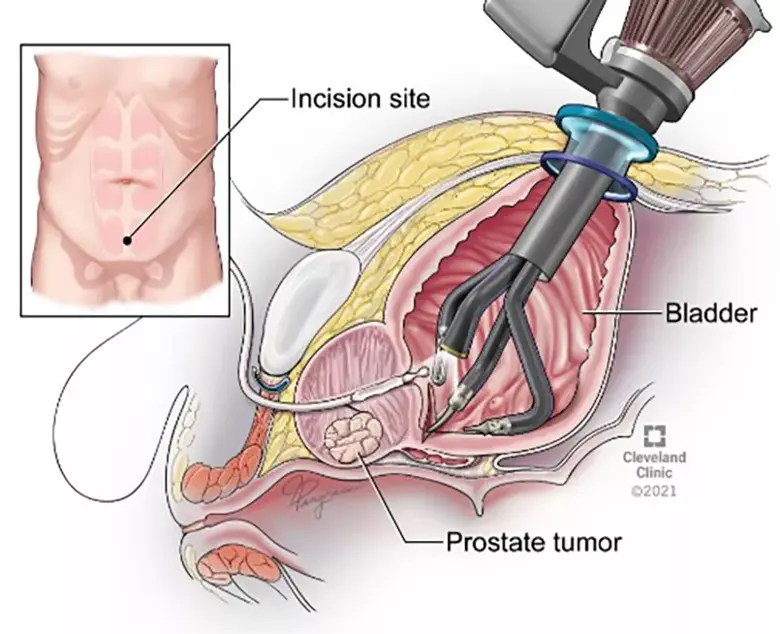
Robotic Prostatectomy , Transvesical Single-Port Radical Prostatectomy. Note the robot is introduced directly through the skin into the bladder.
How Did Mandy Patinkin Overcome Prostate Cancer?
Mandy Patinkin approached his prostate cancer treatment with resilience and optimism, viewing it as a transformative experience that heightened his appreciation for life13. He prioritized his family, balanced his acting career with recovery, and adopted healthy habits like meditation, exercise, and a cancer-fighting diet1. Patinkin’s positive attitude and commitment to well-being allowed him to thrive post-treatment, becoming an inspiration for others battling the disease.
Support from Family and Friends
Kathryn Grody, Mandy Patinkin’s wife, played an instrumental role in his recovery from prostate cancer, offering both emotional and practical support throughout his journey. Married since 1980, their long-lasting bond was crucial in helping Patinkin navigate the challenges of cancer. Patinkin frequently shares moments of joy with Grody on social media, reflecting their strong relationship. He has often described his cancer experience as “the greatest gift I was ever given,” acknowledging that his wife and children were central to this perspective.
Patinkin’s recovery journey was also deeply shaped by family involvement; he celebrated his first year of recovery in 2005 by participating in a 265-mile charity bike ride with his son, Isaac, symbolizing his healing and the importance of family. His son, Gideon, also joined him onstage in 2011, reinforcing the significance of family support. Patinkin’s experience highlights how essential a strong family network can be, not only for emotional support but also in decision-making during treatment, demonstrating how his relationship with his wife evolved into a deeper, more profound connection post-diagnosis.
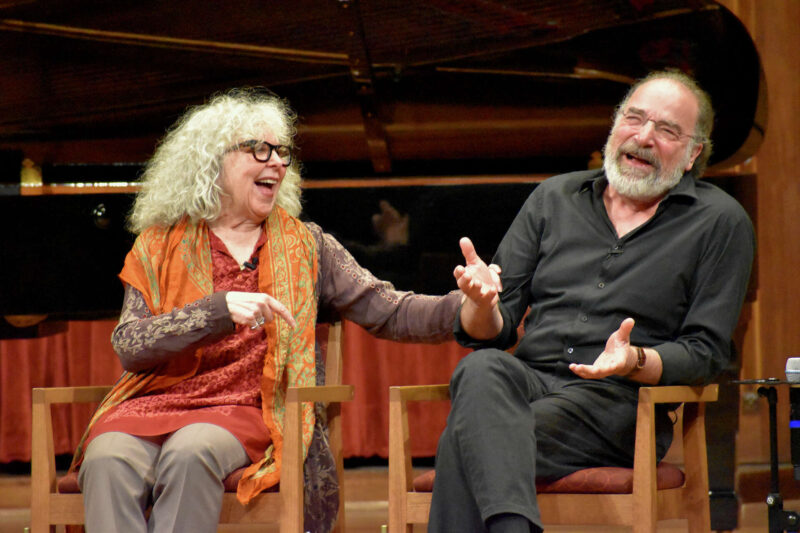
Mandy Patinkin with Kathryn Grody
Mental and Emotional Challenges
When Mandy Patinkin received his prostate cancer diagnosis, his initial emotional response was overwhelming, feeling lightheaded and weeping on the phone. The news instantly reminded him of his father’s death from cancer, which intensified his distress. However, after undergoing a successful radical prostatectomy, he recognized how he had previously taken his life for granted, despite his appreciation for family, music, and career, and developed a new awareness of the preciousness of each moment. To help manage stress and maintain positivity, Patinkin incorporated daily meditation into his routine, focusing on living in the present and finding joy in simple things like sunrises, sunsets, walks in the park, and time with loved ones.
His current mantra is “Be happy,” reflecting his renewed outlook on life, shaped by mindfulness and a deep appreciation for the present.
How Did Advocacy and Public Awareness Help?
Mandy Patinkin raises prostate cancer awareness by openly sharing his personal experience. Through interviews, he emphasizes early detection via regular check-ups and PSA tests. Patinkin’s story encourages proactive health measures and reduces stigma, promoting open conversations about prostate cancer.
Public Speaking and Advocacy
While specific details of Mandy Patinkin’s direct involvement in formal prostate cancer awareness campaigns are limited, his efforts to raise awareness have been notable. Patinkin has openly shared his personal prostate cancer journey in interviews, helping to reduce the stigma surrounding the disease and encouraging proactive health measures. His experience underscores the importance of early detection through regular screenings, like PSA tests, highlighting the benefits of early intervention.
Patinkin’s resilience and positive attitude serve as an inspiration to others, motivating them to live each day to the fullest and appreciate life’s precious moments. Since his recovery, he has also advocated for a healthy lifestyle, promoting antioxidant-rich smoothies and cancer-fighting foods. While the search results do not mention specific campaigns or partnerships, Patinkin’s willingness to share his story has played a significant role in raising awareness and encouraging proactive health behaviors related to prostate cancer.
What Is Mandy Patinkin’s Life Like After Cancer?
Mandy Patinkin’s career spans both stage and screen, with notable success in roles such as his Emmy-nominated performance in Homeland. After his prostate cancer experience, he returned to acting, taking leading roles in The Good Fight and Hulu’s Death and Other Details. Reflecting on his cancer journey, Patinkin described it as “the greatest gift I was ever given,” as it gave him a renewed awareness of how precious every moment is. He also reflected on the lessons learned from his father’s death from cancer, emphasizing the importance of making the most of life.
Ongoing Health Challenges
Following his successful radical prostatectomy, Mandy Patinkin has taken a proactive approach to managing his well-being and addressing potential long-term effects of the treatment. While the surgery effectively eliminated the cancer, it comes with potential side effects like erectile dysfunction and urinary incontinence, which can impact both physical and emotional health. Fortunately, there are treatment options available, such as pills, mechanical pumps, and penile implants. In addition to managing his physical health, Patinkin focuses on maintaining a healthy lifestyle, including drinking antioxidant smoothies daily and eating foods known to help fight cancer, like broccoli, cauliflower, and blueberries.
He also prioritizes his mental health by avoiding stress, practicing meditation, staying physically active, and regularly exercising. The experience has given him a renewed appreciation for life, cherishing moments like sunrises, sunsets, and quality time with family. His story emphasizes the importance of regular prostate cancer screenings and check-ups, and for cancer survivors, improving balance to reduce the risk of falls is crucial.
What Causes Prostate Cancer?
Prostate cancer risk is influenced by genetic factors, age, hormonal imbalances, lifestyle choices, and environmental factors. Key risk elements include a family history of cancer, older age, higher testosterone levels, poor diet, and obesity. Geographic variations also suggest environmental influences. Prevention strategies involve maintaining a healthy diet, regular exercise, and weight management. Genetic testing and individualized screening are recommended for those with higher risk profiles.
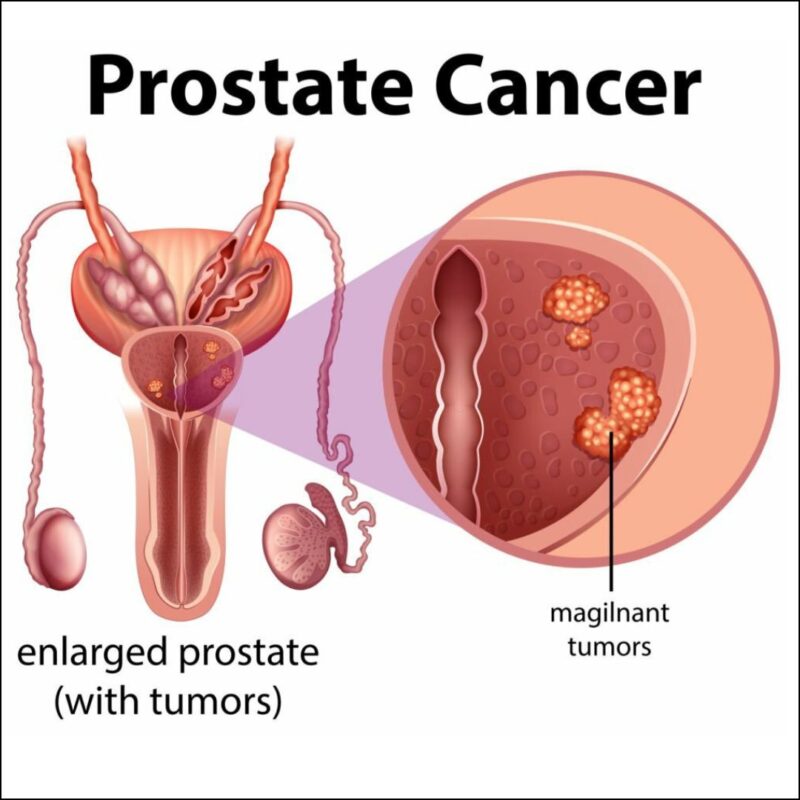
Genetic and Hormonal Factors
Genetics and hormonal factors play significant roles in influencing prostate cancer risk. Here’s a detailed look at these influences:
Men with a family history of prostate cancer are at a higher risk, with studies indicating that having a first-degree relative (such as a father or brother) with prostate cancer increases the risk by about 2-3 times (American Cancer Society, Prostate Cancer Risk Factors). Additionally, genetic mutations like those in the BRCA2 gene significantly raise the risk, with men carrying these mutations being 2-3 times more likely to develop prostate cancer compared to those without them (National Cancer Institute, Genetics of Prostate Cancer). Genetic syndromes, such as Lynch Syndrome, also elevate prostate cancer risk, with men affected by this disorder having a lifetime risk of around 7-12% (Genetics Home Reference, Lynch Syndrome).
Hormonal factors also play a role, as high testosterone levels are associated with an increased risk of prostate cancer, though the relationship remains complex and is still under investigation (Mayo Clinic, Prostate Cancer Risk Factors). Furthermore, variations in the androgen receptor gene, which regulates testosterone’s effects, have been linked to a higher prostate cancer risk, with specific gene variants modifying this risk (Journal of Clinical Oncology, Androgen Receptor Gene Variants and Prostate Cancer Risk).
Lifestyle and Environmental Factors
A diet high in red meat and processed foods is linked to an increased risk of prostate cancer. Studies have shown that men who consume more red meat have a 20% higher risk of developing the disease (American Institute for Cancer Research). On the other hand, a diet rich in fruits, vegetables, and omega-3 fatty acids may reduce the risk (Journal of the National Cancer Institute). Regular exercise is also beneficial, with men who engage in physical activity having a 10-30% lower risk of developing prostate cancer (Journal of Clinical Oncology). Smoking is another significant risk factor, as smokers are about 30% more likely to develop aggressive prostate cancer compared to non-smokers.
Exposure to certain chemicals, such as pesticides, may increase risk, though this connection is still under ongoing research (Environmental Health Perspectives). To help prevent prostate cancer, it is important to focus on routine screenings, lifestyle adjustments, and dietary changes. Regular medical tests can help detect the disease early, while quitting smoking and staying physically active can lower risk. Additionally, a diet rich in plant-based foods and limiting alcohol and red meat is recommended by cancer research organizations to reduce cancer incidence.
You can also read Ben Stiller and Prostate Cancer by OncoDaily
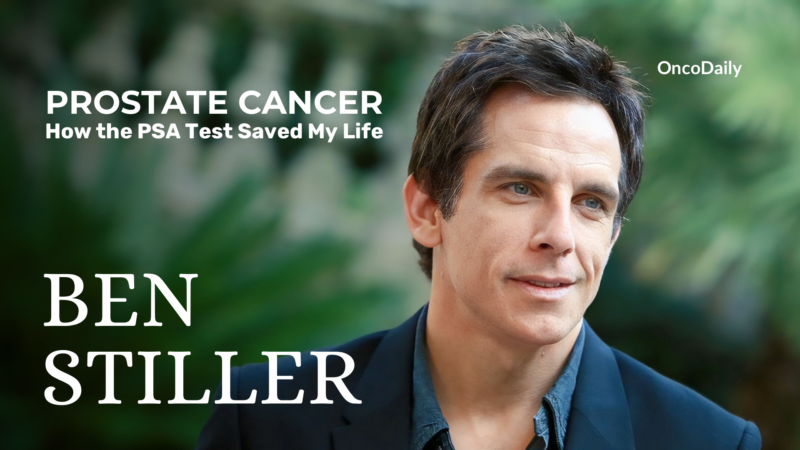
How Can Prostate Cancer Be Prevented?
Regular PSA (Prostate-Specific Antigen) tests and screenings are essential for early detection of prostate cancer, particularly for men over 50 or those with a family history of the disease. PSA tests measure the level of a specific protein in the blood, and elevated levels can indicate prostate issues, including cancer.
Recognizing early symptoms, such as difficulty urinating, frequent urination (especially at night), or blood in the urine, is crucial. Early-stage prostate cancer often shows minimal symptoms, making regular screenings even more vital. Prompt medical consultation at the first sign of symptoms can lead to early diagnosis, improving treatment outcomes and reducing the risk of complications.
Lifestyle Changes
To reduce the risk of prostate cancer, several lifestyle changes are recommended
To maintain a healthy lifestyle and reduce prostate cancer risk, focus on a diet rich in fruits, vegetables, whole grains, and healthy fats while limiting red and processed meats. Foods like tomatoes, broccoli, and fish high in omega-3 fatty acids have been linked to lower prostate cancer risk. Regular exercise is also crucial, aiming for at least 30 minutes of physical activity most days, which helps regulate hormones, reduce inflammation, and maintain a healthy weight—all important for lowering cancer risk. Additionally, avoiding smoking is essential, as smoking is associated with aggressive prostate cancer. Quitting smoking can significantly improve overall health and reduce cancer risks.
Limiting alcohol consumption to up to one drink per day for men is recommended, as excessive alcohol intake may contribute to prostate cancer.Dietary changes play a vital role in reducing prostate cancer risk. Key recommendations include consuming antioxidants found in foods like tomatoes, which are rich in lycopene and may reduce prostate cancer risk by up to 35%, and berries that are full of antioxidants combating cell damage.
Fiber-rich foods, such as whole grains like brown rice and oats, and legumes like beans and lentils, offer benefits by reducing cancer risks. Healthy fats, including omega-3 fatty acids found in fatty fish, may lower the risk of prostate cancer death by 26%, while nuts and seeds provide healthy fats and fiber. Green tea, which contains catechins, has also been shown to inhibit cancer growth, and cruciferous vegetables like broccoli and cauliflower have protective effects against cancer.
You can also watch AI Biomarkers in Prostate Cancer | ASCO 2024 by OncoDaily
Mandy Patinkin’s Top Performances
Mandy Patinkin boasts a diverse and acclaimed career, showcasing his talent across film and television. Here are some of his top performances:
• Homeland (2011-2020): Patinkin garnered five award nominations for his role as Saul Berenson in this spy thriller, portraying the grounded voice of reason1. The show itself won nearly 40 awards during its eight-season run1.
• The Princess Bride (1987): This cult classic solidified Patinkin as a fantasy movie icon. His portrayal of Inigo Montoya, with his iconic line and dedication to performing his own stunts, has resonated with generations1.
• Chicago Hope (1994-2000): As Dr. Jeffrey Geiger, Patinkin earned critical acclaim and a Primetime Emmy Award for Outstanding Actor in a Drama Series1.
• The Good Fight (2017-2021): Patinkin joined this legal drama spin-off in season five, playing the offbeat and kindhearted Hal Wackner, earning a Critics’ Choice Television Award nomination1.
• Yentl (1983): Patinkin’s emotional performance as Avigdor in this musical drama earned him a Golden Globe nomination1.
• Criminal Minds: Patinkin starred as Jason Gideon in this series1.
• Alien Nation (1988): Patinkin appeared in this major feature film

Written By Aharon Tsaturyan, MD
FAQ
Why did Mandy Patinkin leave Criminal Minds?
Patinkin has publicly stated that his decision to leave Criminal Minds during its third season was due to his discomfort with the show's violent content, particularly its portrayal of violence against women1. He described the show as "misogynistic" and harmful to his well-being.
Why did Mandy Patinkin drop out of The Great Comet?
Patinkin dropped out of the Broadway musical Natasha, Pierre & The Great Comet of 1812 amid a casting controversy23. He was cast to replace Okieriete "Oak" Onaodowan, a Black actor, which led to criticism that Onaodowan wasn't given enough time to succeed23. Critics characterized the move as racially insensitive3. Patinkin stated that he agreed with the community's concerns and would not accept a role that harmed another actor.
What type of cancer did Mandy Patinkin have?
He was diagnosed with prostate cancer.
When was he diagnosed with prostate cancer?
Patinkin was diagnosed in March 2004
How old was Mandy Patinkin when he was diagnosed?
He was 51 years old at the time of his diagnosis.
What treatment did he undergo?
Patinkin had a radical prostatectomy, a surgery to remove his prostate gland.
How has cancer changed his outlook on life?
Patinkin has said that, aside from his wife and children, cancer was "the greatest gift I was ever given," because it taught him to appreciate life more and savor each moment as precious
How common is prostate cancer?
Prostate cancer is the most common non-skin cancer in men in the U.S.16. About one in eight men will be affected by it in their lifetime.
What are the risk factors for prostate cancer?
Age, race, and family history are primary risk factors. The rate of prostate cancer is about 60% higher in African-American men. Men with a father or brother diagnosed before age 64 are three times more likely to develop the disease. Prostate cancer mainly affects men over 50, with the most common age for diagnosis between 65-69 years
